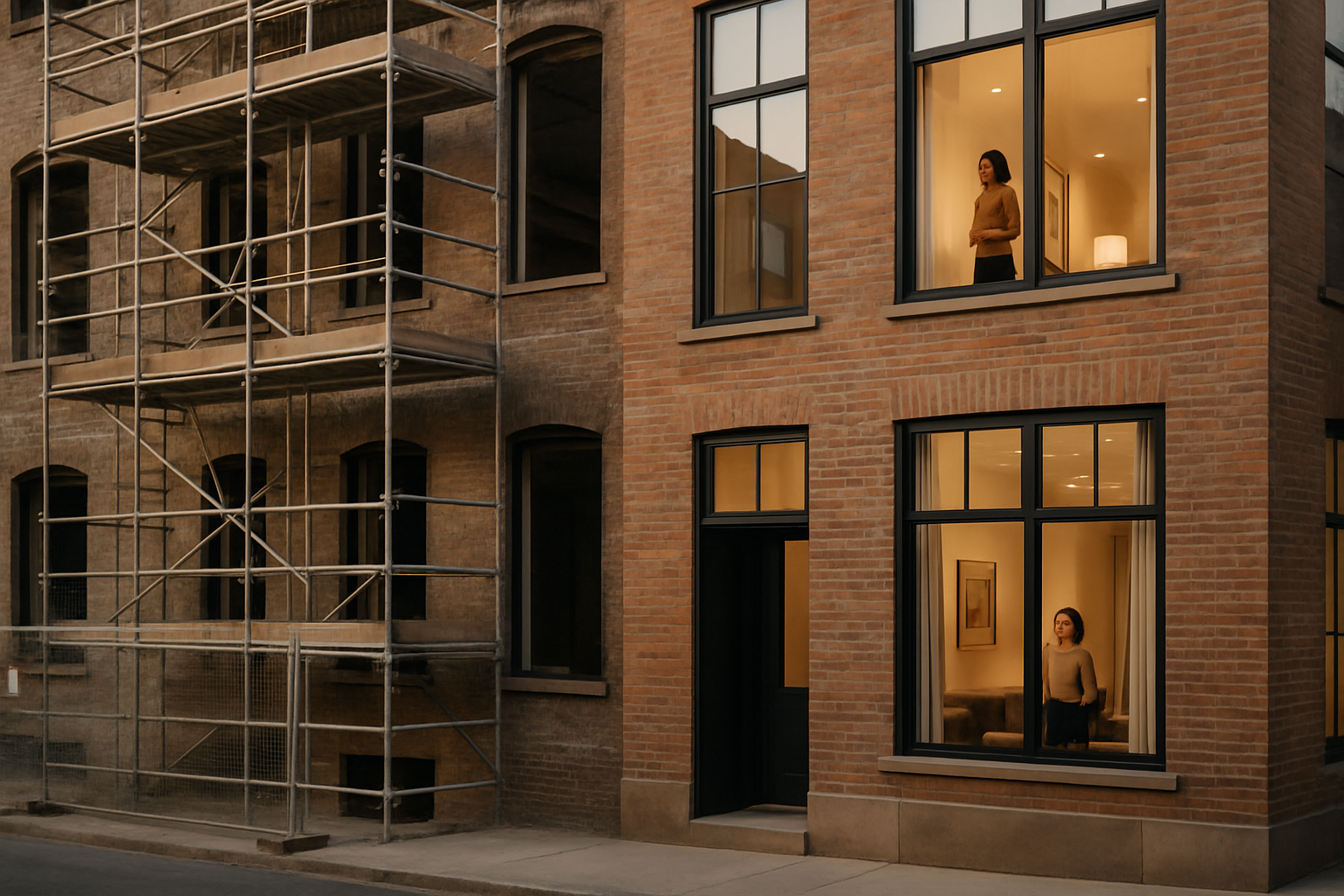Adaptive Reuse: Transforming Historic Buildings into Modern Homes
In the ever-evolving landscape of real estate, a captivating trend is reshaping the way we view and utilize historic properties. Adaptive reuse, the process of repurposing old buildings for new residential purposes, is gaining momentum. This approach not only preserves architectural heritage but also offers unique living spaces that blend character with modern comfort. As urban areas grapple with housing shortages and sustainability concerns, adaptive reuse presents an innovative solution that's catching the eye of savvy investors and homebuyers alike.

The appeal of these projects lies in their ability to maintain the character and charm of original structures while infusing them with contemporary amenities. From exposed brick walls and high ceilings to original hardwood floors and industrial fixtures, these homes offer a sense of authenticity that’s hard to replicate in new construction. Moreover, the location of many historic buildings in prime urban areas adds to their allure, providing residents with the convenience of city living coupled with the distinctiveness of a one-of-a-kind home.
Financial Implications and Market Trends
The financial landscape of adaptive reuse projects is complex but potentially rewarding. Initial costs can be higher than traditional renovations due to the specialized skills and materials often required. However, these investments can yield significant returns. According to recent market analysis, properties resulting from adaptive reuse often command premium prices, with some markets seeing up to 20% higher valuations compared to similar-sized new constructions.
Investors are taking note of this trend. In 2022, adaptive reuse projects accounted for approximately 12% of all residential conversions in major urban markets, a 5% increase from the previous year. This growth is expected to continue, with projections suggesting that by 2025, up to 15% of urban residential developments could involve some form of adaptive reuse.
Navigating Regulatory Challenges
One of the primary hurdles in adaptive reuse projects is navigating the complex web of regulations and building codes. Historic preservation laws, zoning restrictions, and modern building standards can create a challenging landscape for developers and homeowners alike. However, many cities are recognizing the value of these projects and are implementing policies to streamline the process.
For instance, some municipalities have introduced adaptive reuse ordinances that provide more flexibility in building code compliance for historic structures. These ordinances often allow for creative solutions to meet safety standards while preserving the integrity of the original building. Additionally, tax incentives and grants are becoming more common, offering financial support to offset the costs associated with preserving historic elements.
Sustainability and Energy Efficiency
Adaptive reuse aligns closely with sustainability goals, making it an attractive option for environmentally conscious buyers and developers. By repurposing existing structures, these projects significantly reduce the carbon footprint associated with new construction. The embodied energy—the total energy consumed by all processes associated with the production of a building—is largely conserved, resulting in substantial environmental benefits.
However, bringing historic buildings up to modern energy efficiency standards presents its own set of challenges. Innovative solutions, such as high-performance window retrofits, advanced insulation techniques, and state-of-the-art HVAC systems, are being employed to bridge the gap between historic preservation and energy efficiency. Some adaptive reuse projects have achieved impressive results, with energy consumption reductions of up to 30% compared to the building’s previous use.
The Future of Adaptive Reuse in Real Estate
As urban populations continue to grow and the demand for unique, sustainable housing options increases, adaptive reuse is poised to play an increasingly significant role in the real estate market. The success of early adopters has paved the way for more widespread acceptance and implementation of these projects.
Looking ahead, we can expect to see more diverse applications of adaptive reuse. Beyond residential conversions, mixed-use developments that combine living spaces with retail, office, or community areas are gaining traction. These projects not only breathe new life into historic buildings but also contribute to the creation of vibrant, walkable neighborhoods.
Moreover, the lessons learned from adaptive reuse are influencing new construction. Architects and developers are incorporating flexible design principles that allow for easier future adaptations, ensuring that today’s new buildings can be repurposed for tomorrow’s needs.
In conclusion, adaptive reuse represents a compelling intersection of preservation, innovation, and sustainability in the real estate market. As this trend continues to evolve, it offers exciting opportunities for investors, developers, and homebuyers alike, promising a future where the past and present coexist in harmony within our living spaces.





